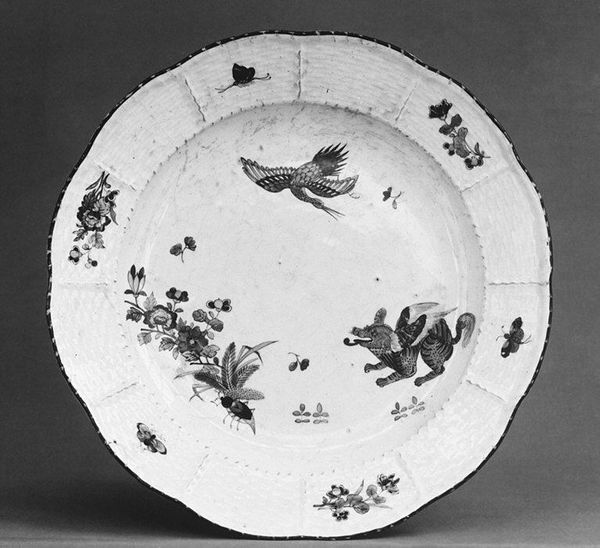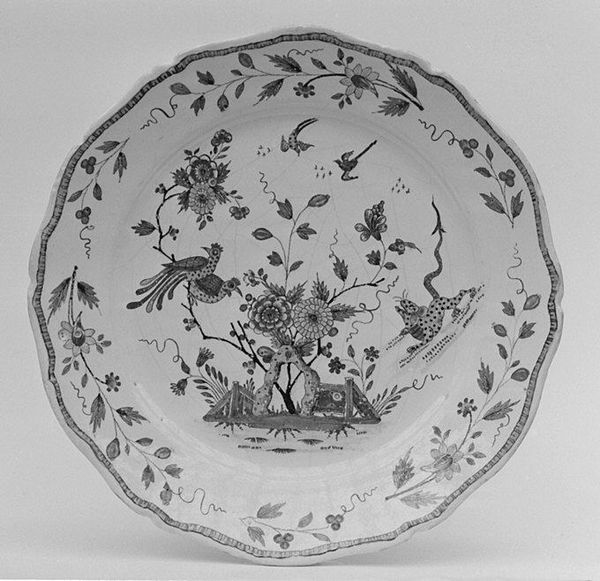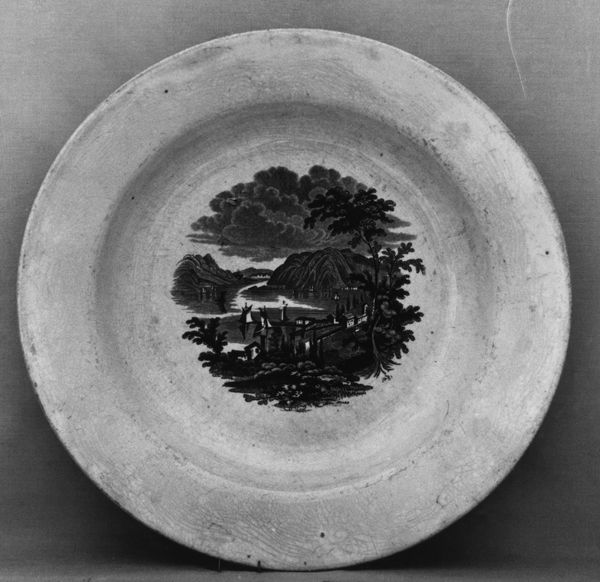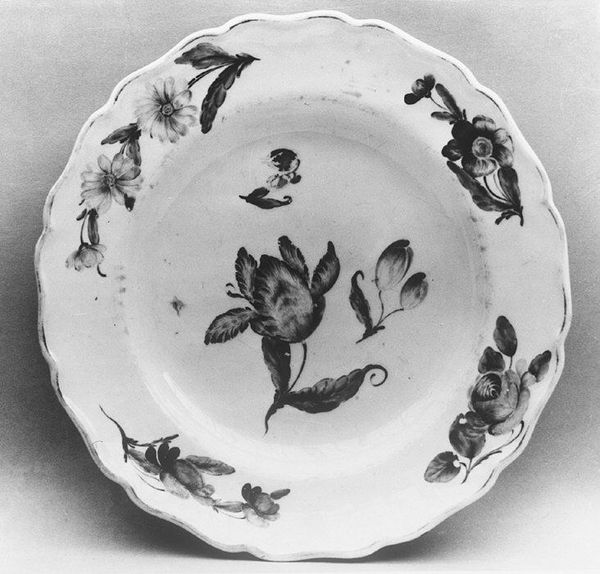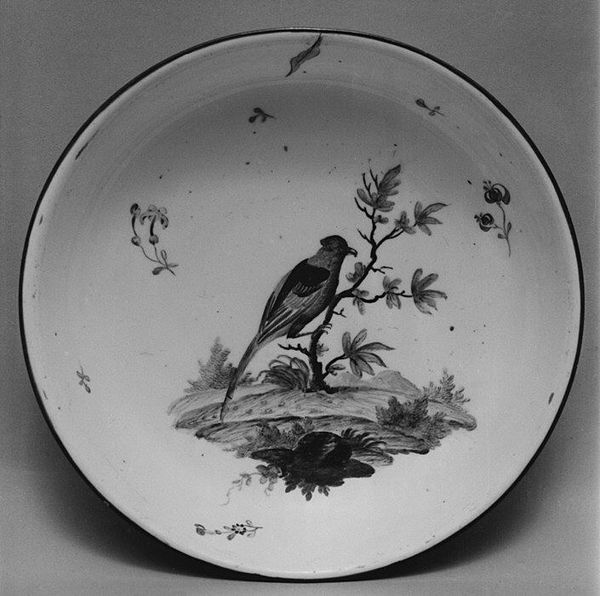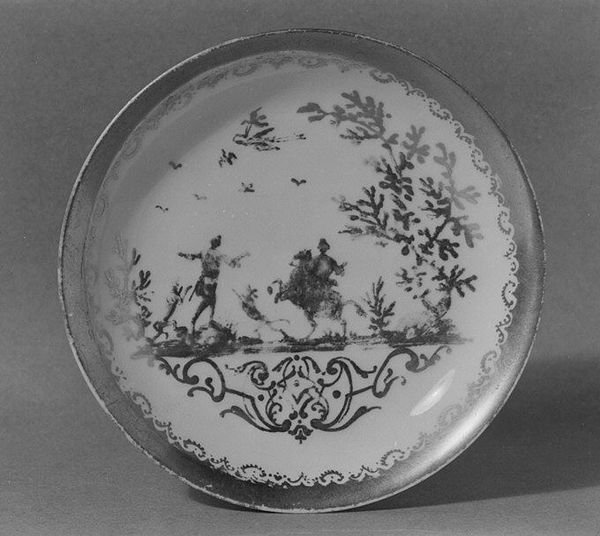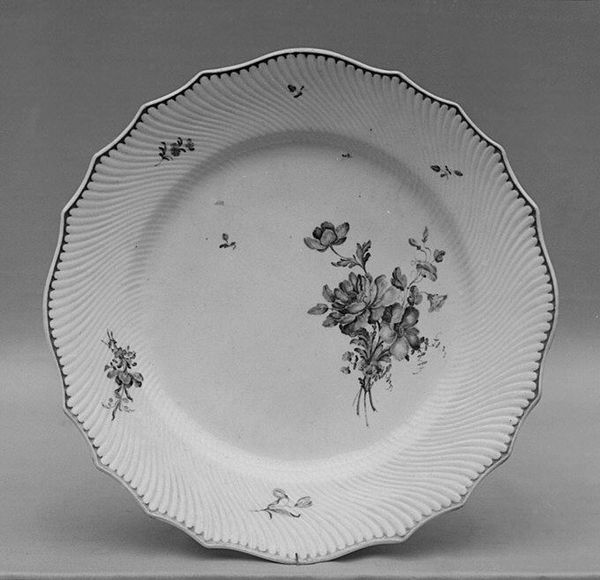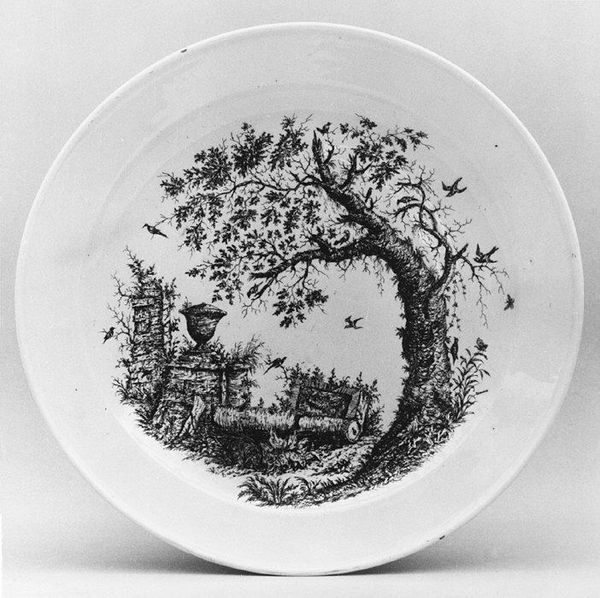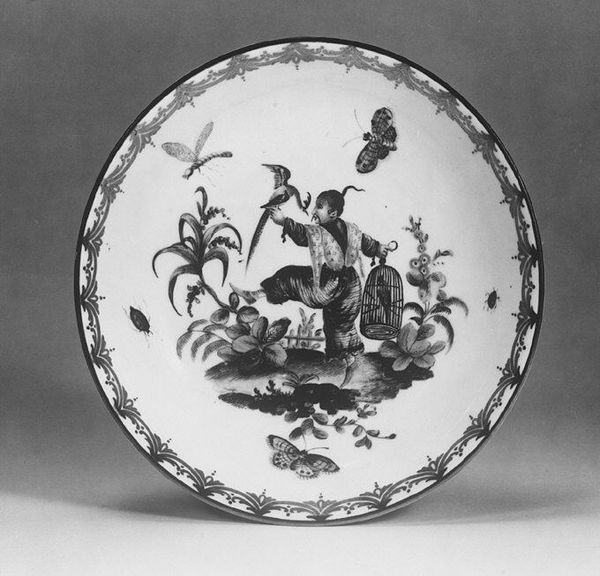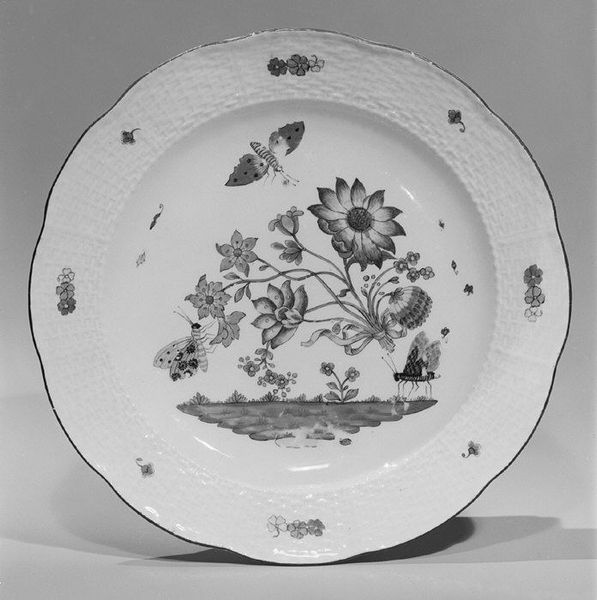
Saucer (part of a service) 1765 - 1775
0:00
0:00
ceramic, porcelain
#
ceramic
#
bird
#
flower
#
porcelain
#
decorative-art
#
rococo
Dimensions: Diameter: 5 1/4 in. (13.3 cm)
Copyright: Public Domain
Curator: What strikes me immediately about this “Saucer,” part of a service produced between 1765 and 1775 by the Frankenthal Porcelain Manufactory, is its delicate tranquility. It’s almost meditative. Editor: Yes, there’s an immediate accessibility, despite the rococo ornamentation. Seeing the object and understanding the materiality, you understand that this was tableware for someone with means, of course. Porcelain production depended on accessing specific raw materials and expertise. Curator: Absolutely, porcelain was very much a luxury good reflecting power dynamics and economic disparity. Beyond that, it speaks to specific artistic lineages of the time, not just technical innovation, but how this aesthetic ties into social performance. Editor: Well, beyond its use as tableware for a high-class owner, consider the division of labor needed to bring this object into existence. The labor needed to source and transport raw materials. We shouldn’t discount how those economic relations impacted global dynamics then. Curator: I think those points are important and help inform how to contextualize an item like this—how even simple aesthetic pleasures reinforce established structures. When considering an object like this, I think of whose stories get told in these spaces. Where are the accounts of those individuals facilitating the piece’s material reality? Editor: Exactly! These ceramics represented the high class that purchased it; and we are stuck, still, today only showcasing what a classist system provides the avenue for! We have to consider also the value put on fine art over craft during that period—the cultural biases built into the system. Curator: Yes, it challenges this perceived notion of progress or advancement and it asks whose interests does that serve? How do we shift those traditional art historical hierarchies to better serve our present realities and values? Editor: This saucer might look beautiful but behind its very existence is labor and capitalistic motives. But I can also say that by observing its production means and considering all this history it still offers a lens for change for us today. Curator: And considering pieces like these is critical for understanding our past—not in service of the status quo, but to examine and challenge these histories in more profound and impactful ways.
Comments
No comments
Be the first to comment and join the conversation on the ultimate creative platform.
